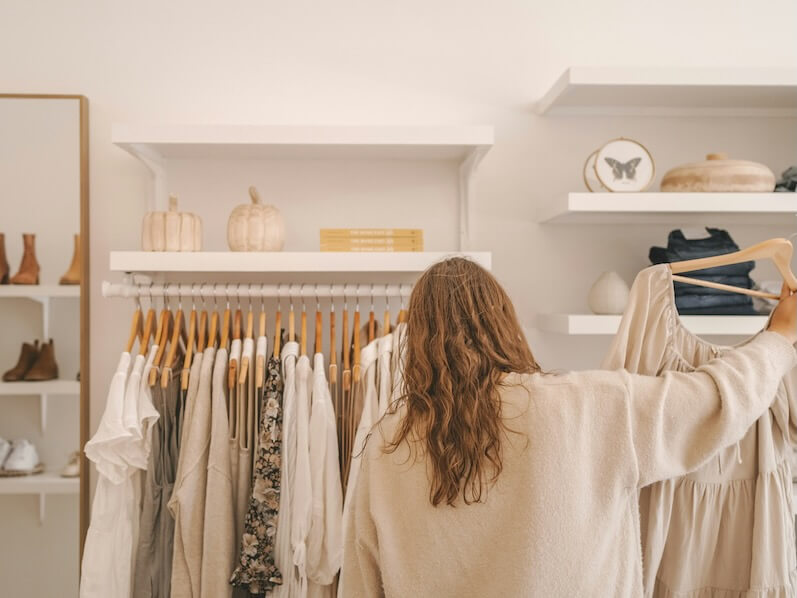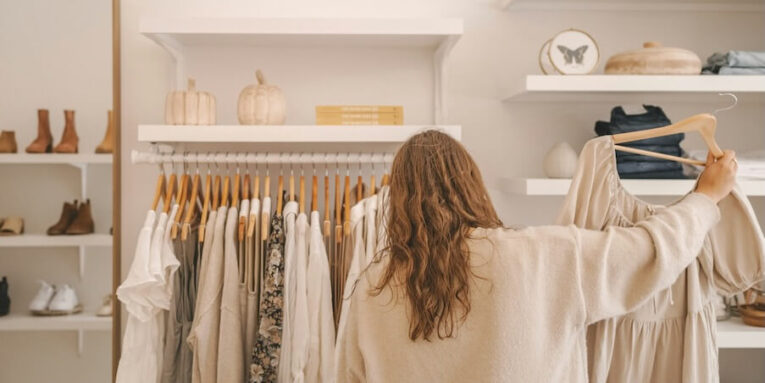People watch how people shop in stores and what do they do? They don’t read labels, they don’t peruse ingredients. They scan, they smile, they go. They see what’s on the shelf, put it aside, barely acknowledging the next item before reaching for the item after it. What’s in the shopping cart isn’t what’s best. What’s in the shopping cart is what seemed pretty enough for that passing eye to stop momentarily and make a judgment call.
For anyone selling a product this is an unfair world to exist within. For anyone who scrapes and saves for months trying to perfect a formula, get better ingredients than the competitor next door and scale up to a quality control process, only to have their products sit on the shelf next door to a box of crap with a better looking cover, it’s unjust. All that hard work and dedication is cast aside by someone who accomplished the bare minimum: attracting a customer’s eye. This happens all the time and it’s infuriating for anyone who’s put real effort into something worthwhile.
Research from retail psychology would suggest otherwise; research would suggest that people spend fewer than three seconds with a product on the shelf before deciding to put it in their cart. Thus, they don’t have time to realize what’s best when their brains are only registering what’s visual. This isn’t new. This is valuable information that suggests that buyer decisions aren’t based on product quality but instead packaging efficacy.

The Three Second Decision Window
Consumers have three seconds with your product on the shelf before they make a decision. During those three seconds, they’re not pondering what’s best for them. They’re getting visuals and making gut level assessments based on what the packaging tells them. It’s so fast that by the time they navigate fonts, color choices, material textures, and presentation, they’re already gone.
Beyond an inability to determine which product is best is also the reality that some categories make it impossible to gauge quality. When selling wine, for example, a professionally designed wine label can make all the difference between a bottle that gets picked up versus one that’s ignored. The same applies to specialty foods, household essentials, and personal care products, none of these allow consumers the opportunity to open them up and give them a try before purchasing. If anyone hopes to buy a household cleaner, hoping it works best from the rest of its competitors, they have to take a leap of faith, even if they hear good things about it or read reviews online. In store, a simple glance is all they get, and many thoughts dictate impressions within almost no time at all.
What Packaging Actually Communicates
The average product has mere seconds to entice but within those seconds it can communicate dozens of signals, both intentional and unintentional. An artfully crafted wine label suggests price worthy contents; a poorly printed label on a low quality structure suggests things were cut short along the way; corners were cut. Yet consumers associate these graphics almost instantly although they may lack the cognitive ability to explain how they reached such conclusions.
Color matters more than many producers like to believe. Color schemes resonate as premium or budgetary/mass market; for example, if two versions of the same product appear on the shelf in different colors, one may retail for $24.99 while another may sell for $5 simply because people don’t want to be seen as spending too much or too little on something, no matter if it’s the exact same formulation. The same goes for typography; illegible fonts or mismatching aesthetics, poor spacing or poor print quality, talks cheap. Consumers see amateur packaging regardless of what’s inside; components figure out how to make sense without producers’ approvals.
Material quality communicates as well. Gloss, tactile finishes, metallic labels, embossing, all of these elements indicate that there’s pride in ownership when putting something on shelves; it suggests the seller believes in its product worth enough to enhance consumer experience should give them price worthy compensation. Alternately, peeling labels, too thin stock materials and cover stock printing show a lack of attention before anyone’s had a chance to open anything.
The Premium Perception Problem
Unfortunately for producers fighting an uphill battle for limited shelf space visibility and even less time requirement for shoppers to process what’s in front of them, the things that make packaging look premium cost money. The last thing a new brand wants is to invest significantly more in presentation than an actual product that it knows works really well. Limited budgets force people into corners; graphic design fees, high quality printing processes, tactile engagement materials, these add up quickly when most producers are just trying to get off the ground.
But skimping doesn’t help either. A product assumed cheap will be treated as cheap by retailers and consumers, whether relegated to the sale section or ignored amidst marginally more visually appealing products; whatever pennies producers save on basic packaging they’ll never recoup when sales are lower or inventory is high due to lack of price excellence.
The opposite dynamic happens all too often as well; if buyers see value through high end packaging they’ll presume high end contents and will pay for such expectations, even if the product inside isn’t worth it. Presentation often commands a premium even with misleading feelings; if it wasn’t so pretty, consumers would never assume the contents were that much better without evidence supporting their findings.
Shelf Position and Visual Competition
As soon as a box hits the shelf, it’s fighting for survival against all other products, within its category and everything else in the market. The more beautiful box may still lose out based on positioning so understanding competitive advantage becomes key.
What else is out there? What’s the competition look like? What colors dominate? If one box is crimson red and bright yellow? It may stand out too much amidst browns/blacks/whites if those are more indicative of this category; people need to find ways to stand out while blending in based on acceptable norms.
Should one’s product find itself in an unfortunate position due to marginally more successful first impressions it does no favors either; eye level boxes are more easily seen than those on bottom shelves or tucked away in dark corners since placement inside retail has everything to do with performance; yet ironically, boxes that look appealing from the start get better placements as well because retail assumes they’ll sell better since their immediate appeal outpaces anything else.
When Quality Finally Matters
Yet first impressions only take a product so far; once at home and given an opportunity for sampling, sometimes subconsciously, and use quality ultimately matters most when suggesting products won’t come back if they’re not worth anyone’s time. A premium box that entices buyers upon visuals but no performance will ultimately lose buyers once, and maybe only once.
The strongest first impressions are those that perform equally as good under recommendations and actual use. Those are the products that gain momentum in their marketplace because the buy in is clear through visual presentation and support; investments become valuable when both avenues shine through!
Yet so many producers fall prey, and compounded by their awareness! They realize what’s best and produce the best product first, they don’t realize what’s necessary for visual quality second. By the time they do it’s too late, they’re already behind in positioning and have missed out on valuable options.
The Retail Reality Nobody Wants to Admit
The unfortunate truth is more often than not retail triumphs over product greatness; better products end up failing because they don’t look like anything special while mediocre products take off because they know how to present themselves well in a market without substance behind them.
This isn’t to say quality doesn’t matter, but when quality exists without consideration of where it’s going it loses momentum; better logos essentially trap images prove useless if no one’s ever picked them up and brought them home.
Producers need to accept reality for what it is; there is very little time for second guessing. Quality matters, but only when combined with successful visuals does reputable benefit support greatness down the line because those who decide it should speak for itself lose credibility when reality suggests otherwise, those products never see low sales pricing because no one gets that far!
It’s not enough in real world shopping; it’s not fair, but it’s reality. Producers best equip themselves with success based on visuals first and foremost, but they must remember if they aren’t critical assessments of their own products then someone else will be!
People also read this: Paylocity Features That Support Employee Training Initiatives

